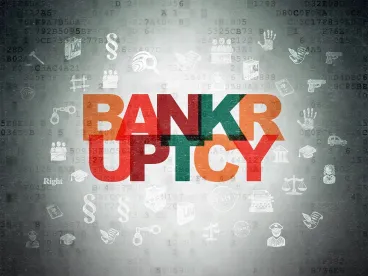We have previously informed you that if you are a small business that needed to file bankruptcy to save your company, then you may be able to take advantage of Subchapter V of Chapter 11 of the Bankruptcy Code.
The new subsection, which took effect in February, creates a more streamlined and less expensive Chapter 11 reorganization path for small business debtors. Subchapter V appears to be popular. According to the American Bankruptcy Institute, over 600 cases have been filed since February, including two dozen in North Carolina.
Subchapter V applies to a person or business entity "engaged in commercial or business activities." To be eligible, the debtor must be engaged in commercial activity and total debts -- secured and unsecured – must be less than $7,500,000.00. At least half of those debts must come from business activity.
Most small business owners must guarantee the business's loans, leases, and credit facilities. This creates a conundrum for reorganizing the business in bankruptcy. Every dollar the business avoids having to re-pay creditors under a plan of reorganization is a dollar the owners who guaranteed the debt will be liable for. Generally, creditors can pursue these owner obligations outside bankruptcy without violating the automatic stay.
Subchapter V does not allow a business and its guarantors to reorganize in the same case. But can the individual owners alone use Subchapter V to reorganize their debts? In a recent case from Louisiana, a bankruptcy court held that Subchapter V is available not only for a business, but also for business owners with guaranty obligations.
Through multiple companies, Andrew and Christine Blanchard ran a Cajun business empire that processed shrimp, sold pickled quail eggs, farmed hemp and other crops, provided vending machines, and rented properties. They had guaranteed the business debts and signed mortgages for the rental properties. When revenue began to recede like South Louisiana's marshy coast, they filed a traditional Chapter 11. Several months later, in April 2020, they amended their petition to proceed under Subchapter V.
One creditor objected, arguing that as individuals they could not proceed under Subchapter V. The creditor argued that the Blanchards could only use Subchapter V if each business entity for which they signed a guaranty also filed bankruptcy. The bankruptcy court rejected this argument and allowed the Blanchards to proceed under Subchapter V. The court held that Subchapter V applies to individuals and businesses, and does not require a small business debtor to be currently engaged in a commercial or business activity when it seeks relief. Because a majority of the Blanchards' debts stemmed from operating businesses and non-operating businesses, they qualified as small business debtors under Subchapter V.
In North Carolina, we have a case where a business filed a Chapter 7 bankruptcy to liquidate the company, and then the owner guarantor filed his own Subchapter V case. We also have a case where the business reorganized under Chapter 11 and then an owner guarantor filed his own Subchapter V case. Will we see cases filed simultaneously by businesses and owner guarantors and, if so, how will the courts handle them? Given Subchapter V's popularity and the lingering economic problems caused by the coronavirus, we expect to see many more cases and the courts will probably grapple with this and other questions.




 />i
/>i

